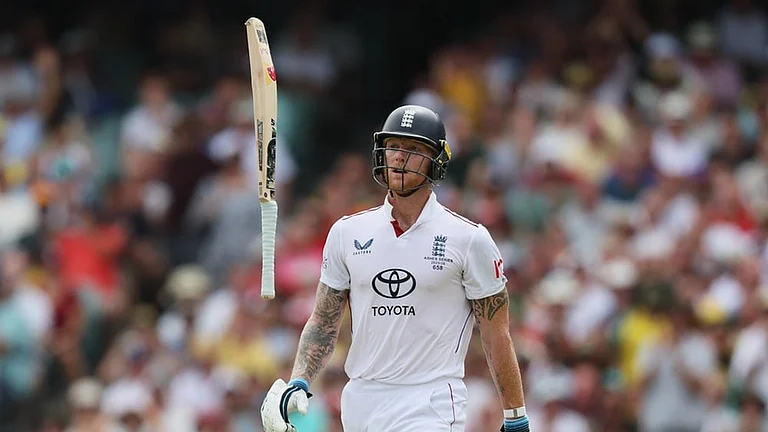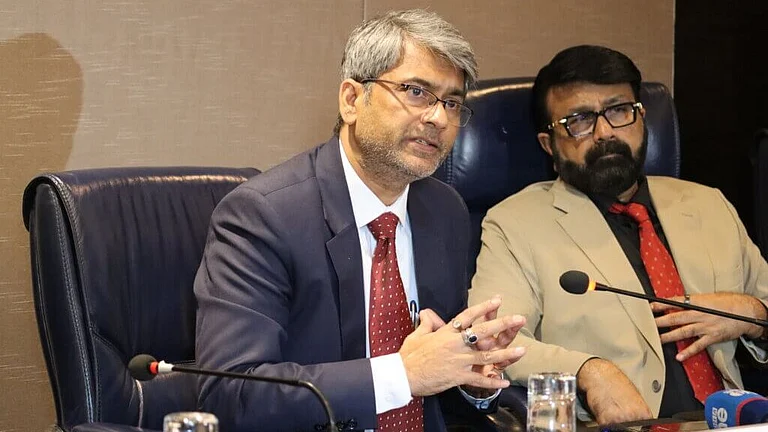The official line, as parroted by Pakistani and western writers, takes off from the time when the south, around Kandahar in particular, had become a land without law, feuded over by a host of warlords. The Taliban had fought with various mujahid groups during the Afghan war but returned to their studies in 1992. It was only in '94, when a local mujahid commander and his troops kidnapped two teenage girls from the Kandahari village of Sang Hesar and repeatedly raped them at a local checkpost, that Mullah Mohammad Omar called upon 30 of his fellow Taliban, liberated the girls and hanged the mujahid commander. Thus the Taliban movement was born.
What this factually-correct but romanticised account doesn't explain is how the Taliban defeated the battle-hardened troops of major guerrilla leaders like Rashid Dostum, Gulbudin Hekmatyar and Ahmed Shah Masood. How did these students muster such large numbers of soldiers in so short a time? How did they train and arm themselves? From where did they get their command structure, weapons, strategic plan and funding? Again, the official line was that people flocked to them spontaneously.
Which they did. But Rashid gives details on how the Taliban's rise and purchase of arms was funded by the atm or the Asian Transport Mafia, that plied convoys of trucks from Central Asia to Pakistan, ferrying all sort of contraband, from drugs to electronic goods. The southern warlords, each of whom extracted a toll from the truckers, had made the trade prohibitively expensive. The atm turned to the Taliban to restore order. As per Rashid, the Pakistan government didn't initially support the Taliban, as it had put all its eggs in the Hekmatyar basket. Only in 1995—almost a year after the movement was born and it captured Hekmatyar's main arsenal at Spin Boldak—did it throw its weight behind them.
Griffin's account differs from Rashid's in important details. Groups of Taliban were attached to each of the Afghan militia operating from Pakistan during the Afghan war. These maintained their cohesion within the militia, even eating separately from the other mujahids. The connection with the Pakistan government didn't occur in '95 but in '94 when Benazir Bhutto's interior minister tried unsuccessfully to force a convoy through from Peshawar to Turkmenistan via Kandahar and Herat. To guard the checkposts along the route and provide security, Nasirullah Baabar enlisted the services of 1,500 Taliban, led by Omar. The Taliban fulfilled their task over the allotted stretch—Jalalabad till 90 km west of Kandahar—with distinction. The convoy was eventually stopped outside Herat and pillaged by governor Ismael Khan. But Baabar was already impressed and Pakistan began to shift its support to the Taliban. It encouraged Pushtun mujahids who'd previously flocked to Hekmatyar, to join the Taliban. There were a lot of them, as throughout the Afghan war, Pakistan had channelled fully half of the $6 billion US aid to the mujahids to him. The recruits went where the money was. The Taliban were able to recruit the first of their military commanders and battle-hardened soldiers from among them. Again, it wasn't at Spin Boldak that they acquired their first huge cache of arms, but in October 1994 when a Hekmatyar cache of arms in an isi-built storehouse at Shin Naray fell into their hands. It reportedly contained up to 800 truckloads of arms and 15,000 truckloads of ammunition. The possibility that the isi arranged for this to happen can't be ruled out.
Griffin's account differs also from Rashid's inasmuch as it focuses on the internal politics of the Afghan factions. He analyses the civil war in terms of the enduring schisms in Afghan society—between Pushtun and non-Pushtun, Ghilzai and Durrani, town and country, tradition and modernity—and traces how they shaped politics through the days of King Zahir Shah, the conflict between Khalq and Parcham wings of the Communist party, and finally the mujahid forces mustered in Pakistan. This makes fascinating, if grim, reading.
Griffin's analysis of how Afghanistan was embroiled in and eventually became a victim in the revival of the Great Game (played this time between the US, Russia, Pakistan, Saudi Arabia and Iran for controlling the flow of oil and gas out of Central Asia) helps one grasp much of the ambivalence of US policy towards the two rivals in South Asia. The cis states had 40 per cent of known oil and gas reserves of the world and were desperate to get out of Soviet clutches who seldom paid them more than half the value of their oil and gas. For this they needed pipelines to carry their oil to other destinations. Griffin's account of how Turkey, Iran and Pakistan all put in their bids is fascinating. For some time it seemed Pakistan would win. But that meant pacification of Afghanistan. When the Taliban proved neither as successful nor as pliable as Pakistan led the US to believe, the deal fell through. That was when the American honeymoon with India began in earnest.























